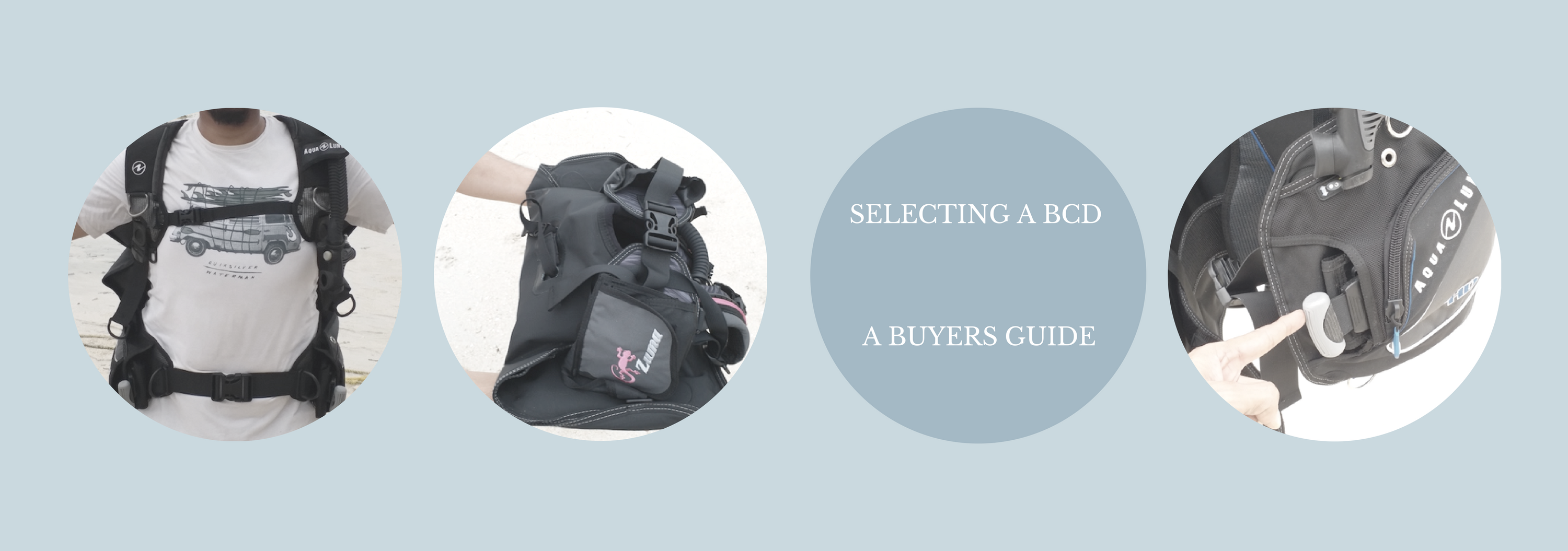


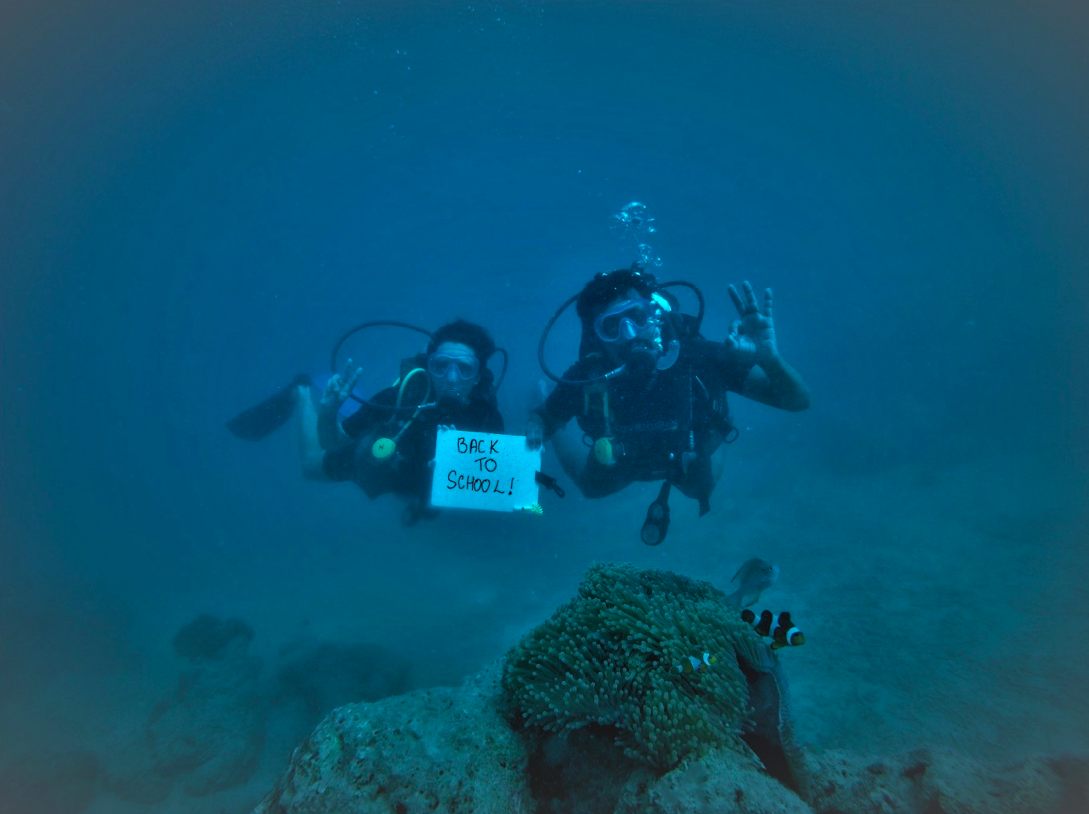
Introducing the Back to School dive package!
If the ocean were your classroom, would you like to go back to school?
If you have been looking to know more about the marine environment and how life works underwater or if you would like to learn how to identify fish and other reef organisms, this two day package is for you! Learn more about some of the conservation challenges our oceans are facing and help us come up with solutions to protect these magical places.
We also offer this package as an Underwater Naturalist specialty through PADI and SSI open to any diver with at least an Open Water certification.
This program runs over two days and includes short theory classes and discussions along with four open water dives. You can also choose to do a night dive as one of the four dives.
During this course we introduce you to some of the numerous ocean ecosystems (yes, there is more than one!). We take you through how environmental factors shape these coral reefs as well as our experiences when we dive these sites. Reefs are extremely diverse spaces, where survival is based on cut-throat competition but also to an equal measure on cooperation and forging partnerships. Learn about some of these interactions as they unfold like a show around you on every dive! You also get to try your hand at identifying fish and other reef organisms and be a part of REEF LOG, the first diver-led reef monitoring program here in the Andamans!
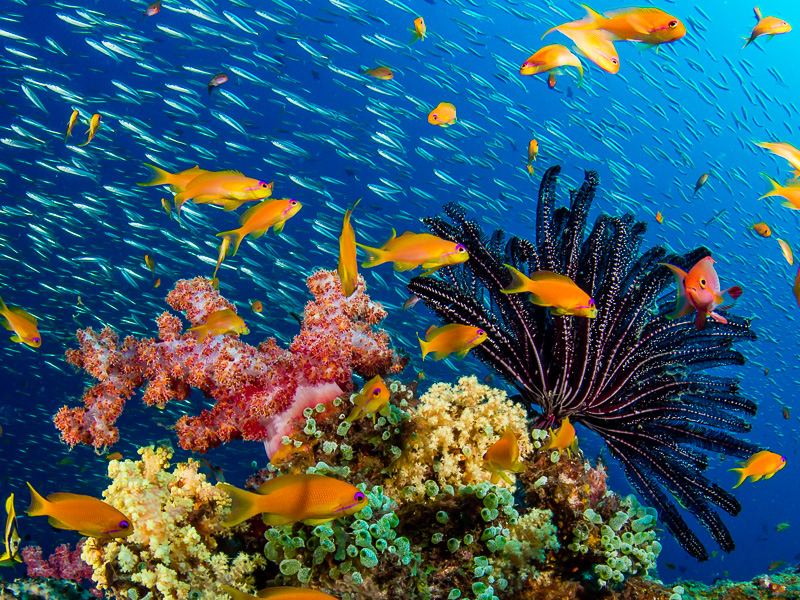
Image courtesy: Gunnhild
Marilia and Jugal were the first two students on this course package. Here is what Marilia had to say, “Diving became much more interesting after a short Underwater Naturalist course, that basically introduced micro life, which I couldn’t identify before, and explained the relationships between the animals down there.” Jugal feels that “understanding more about the underwater environment is rewarding on various levels. Knowledge of fish identification, understanding of interactions between organisms, relation between organisms and their environment are few aspects this course develops, which make every dive more interesting, fun and fulfilling. It also makes you aware of the importance of conservation through individual and collective efforts. Learning through discussions and reading along with practical demonstration (during dives) of everything in live action makes for a beautiful experience while developing a special tool to take away and make use of in all future dives!”
Diving with a naturalist’s perspective can also be fun.

Snippets of the ocean gravity video are resurfacing on the internet and we wanted to let you know that there is more to that video. The video is an edit of a short film made by Guillaume Néry.
Here’s the description from his Youtube channel.
Ocean Gravity is a short film that rewrites the rules of the underwater world and takes us this time into the world of the weightlessness.
Just like in the space, there isn’t anymore a top or a bottom. There isn’t anymore upside down and wrong side out. The ocean becomes cosmos, the man a satellite, and the bottom of the sea an unknown planet. Welcome in the fascinating universe of Ocean Gravity.
Guillaume: «since ever, my diving propels my imagination in the fantasy of the conquest of space. To touch the sea floor or to set foot on an unexplored planet, here are 2 fascinating adventures which feed my thirst of unknown. The discovery of this quite unique place (Tiputa – Rangiroa – French Polynesia), allowed us to put in image the visual closeness of 2 universes water and air, ocean and space.»
Here’s the entire freediving short film.
By a strange coincidence, DIVEIndia now offers Freediving certification. Hint hint!
Credit: Guillaume Néry
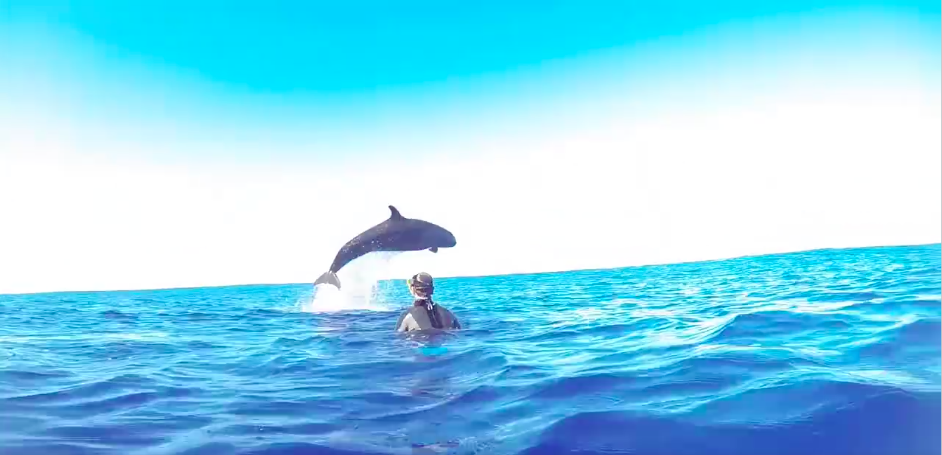
We know this is an old post, but its definitely worth viewing.
False killer whale sightings are rare, but when photographer and naturalist Scott Portellini was snorkelling in Tonga, he experienced something divers dream about.
The video footage showing the leap – and the snorkeler’s astonishment.
The video was posted on Facebook by guide and photographer Scott Portelli, after a Swimming With Gentle Giants humpback whale excursion.
Portelli’s description reads: “Today out on the water we had an unexpected encounter with a large pod of false killer whales. This one interactive one came back and literally jumped over one of my guests. Never know what you are going to see in Tonga.”
False killer whales (Pseudorca crassidens), which can grow to about 17 feet, are uniformly black or dark gray, and do not resemble killer whales. They were named because, like killer whales, they sometimes attack small whales and dolphins.
Sunny days by the beach are best spent taking a cooling dip in the sea. Wait for the tide to rise and once there is enough water to swim in, make a dash for it. Even better if you have a mask and snorkel to take with you. Now that is what most would say. But, have you ever waited for the tide to recede before getting into the sea?
What could there possibly be to do or see when there is practically no water, you ask? The short answer to that would be –prepare to be amazed.
The ‘inter-tidal zone’ is that stretch of the ocean that can go from being fully submerged during a high tide, to holding as less as one foot of water at low tides. The receding water gradually begins to expose the hidden ‘rocky shore’ ecosystem- a magical world waiting to be explored.
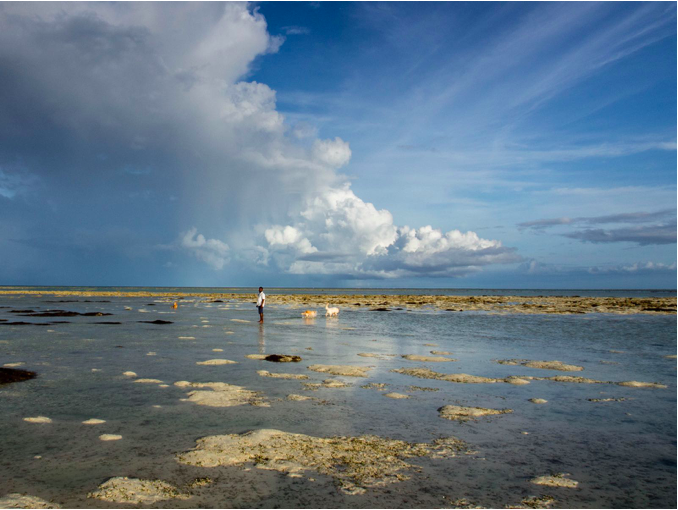
Credit: Gunnhild
It was a sunny and clear day here at DIVEIndia. Sharmila and I had just rounded up an army of nine kids who had been eagerly waiting to head out for a low tide walk. We had promised them that we would spend all afternoon looking for crazy critters of the sea.
The moment we set foot on the beach, the first questions began coming in. Touching the wet sand, one of the kids asked “Wasn’t the water up till here in the morning?”
Another wondered “Where did all those rocks come from?”, followed by “What made all the water disappear?
We talked about the moon and tides and what makes the pretty patterns in the sand. We spoke about how the intertidal zone is a place of extreme environments. How animals and plants found in this stretch of the sea have adapted to extreme fluctuations in water levels, water temperature, oxygen and salt.
We hopped across the rocks and waded through the shallow pools that formed in between, looking for any sign of movement- something crawling here, something darting there and sometimes, something slithering under our feet. Each time one of us spotted something, there would be an excited “Oh my, what is that?!” and within no time there would be circle of curious kids squatting around the critter that was just spotted.
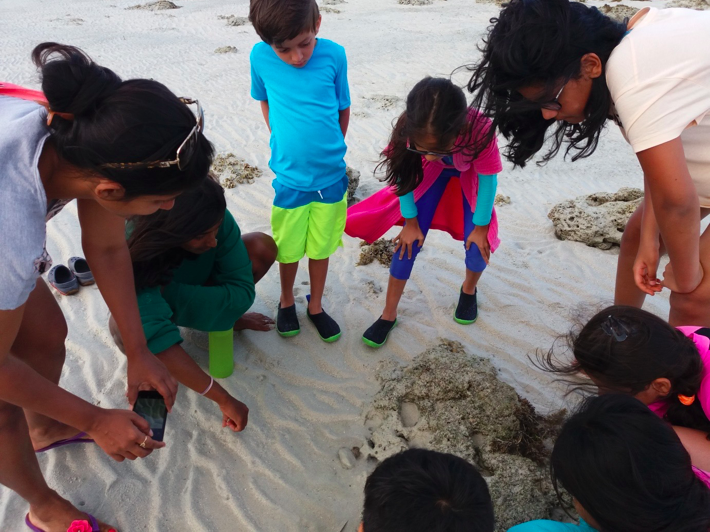
Credit: Sharmila Monda
A common sentiment shared by all who have come on these walks with us, kids and adults alike, has been absolute surprise and amazement at how full of life this intertidal space actually is. All we have to do is squat, wait and something beautifully bizarre will emerge right before our eyes. From crabs, wormsand snails to many species of coral, sponges, juvenile fish and marine plants. We’re also keeping an eye out for the occasional mantis shrimp, octopus and sea snake too!
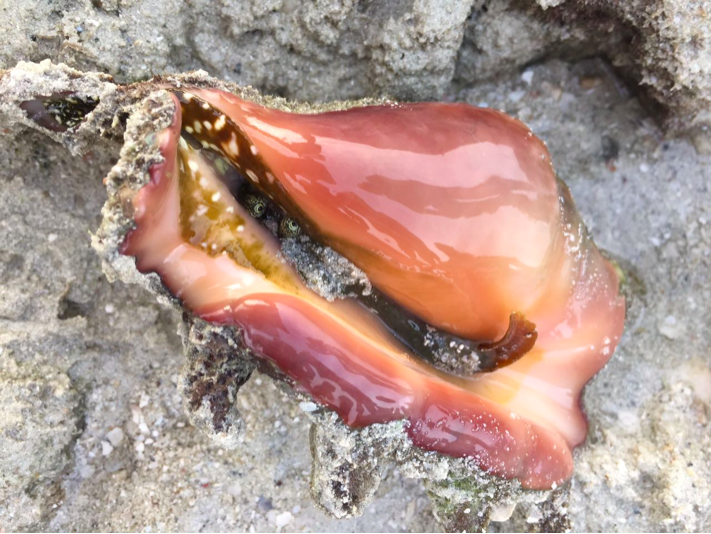
Spider Conch. Credit: Natasha Jeyasingh
Intertidal walks have also been a great space for conversations about conservation. Looking at the stunning architecture of the rocky sandy shore, yet finding vast tracts of dead coral. Seeing hundreds of hermit crabs scuttling about carrying their homes made of shells lying on the beach, while walking past a wide variety of plastic trash.
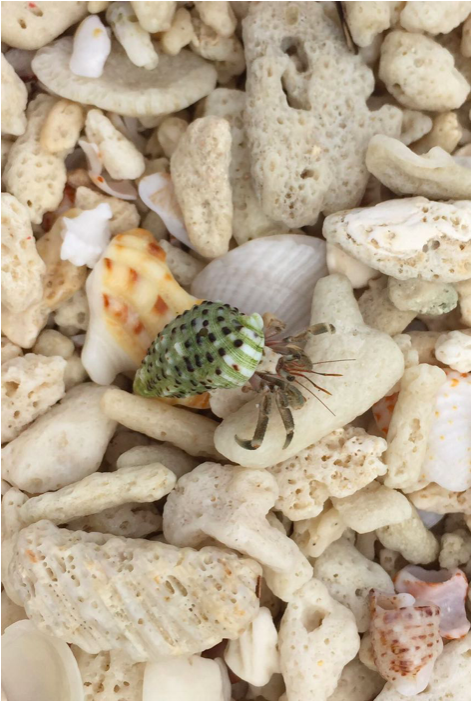
Hermit crab blending in with washed up coral. Credit: Natasha Jeyasingh
Everyone leaves with a renewed sense of awe, while also realising how degradation is slowly setting in and wondering what can be done to understand and conserve these beautiful places.
For starters, as visitors to these beautiful seashore ecosystems, it’s time we start gathering more knowledge than we do shells. 🙂
Read about ‘The Highest Tide‘ a novel by Jim Lynch, our #OceanLove book of the month for July 2018
We now offer a variety of marine ecology programs, both diving (covering reefs, surveys, fish identification and more) and non-diving (covering not just the reefs but also mangroves and coastal eco-systems). These can be taken as stand-alone options or combined with diving packages. Please contact us for more information on these programs.
Earlier, I had talked about the benefits of owning your own scuba gear, Here, i would like to start by discussing a BCD and a regulator that I have a lot of personal experience with, and which I think are fantastic value for money: the Aqualung Pro HD and the Apeks ATX40 regulator.
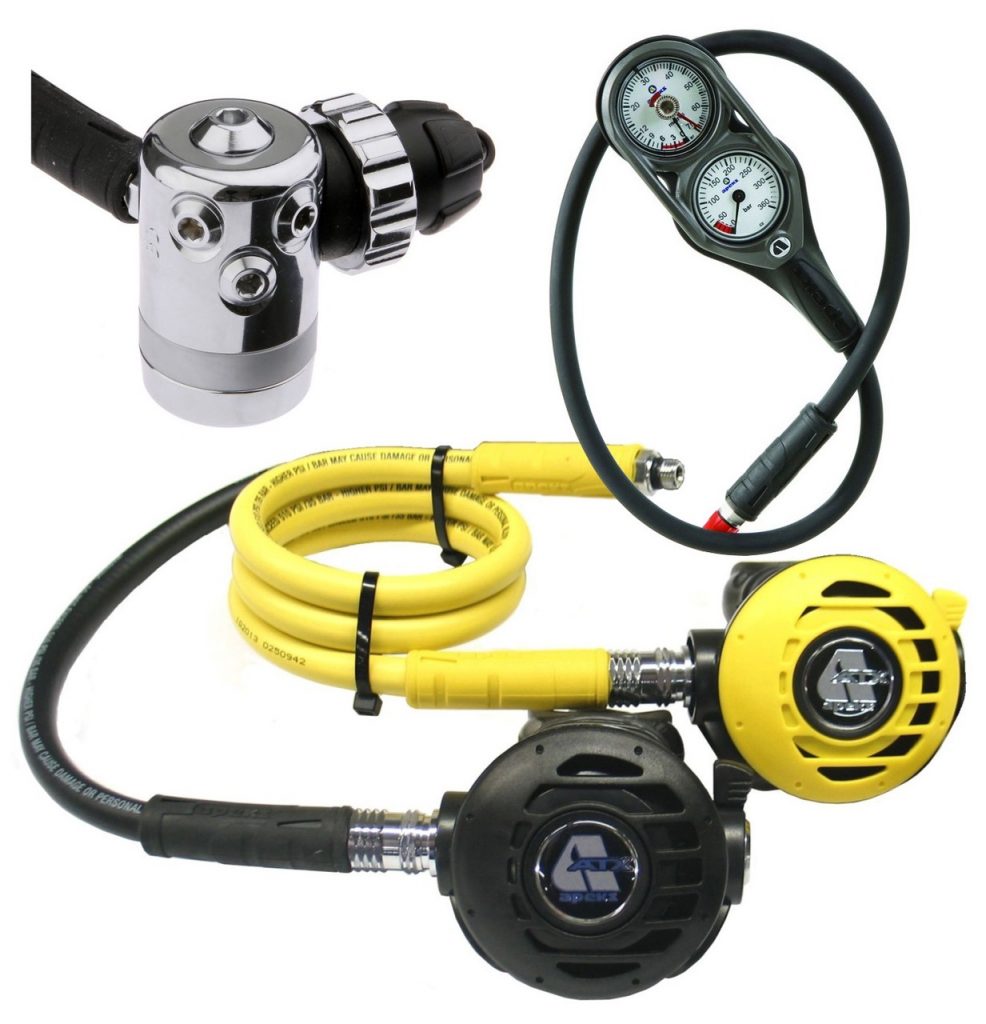
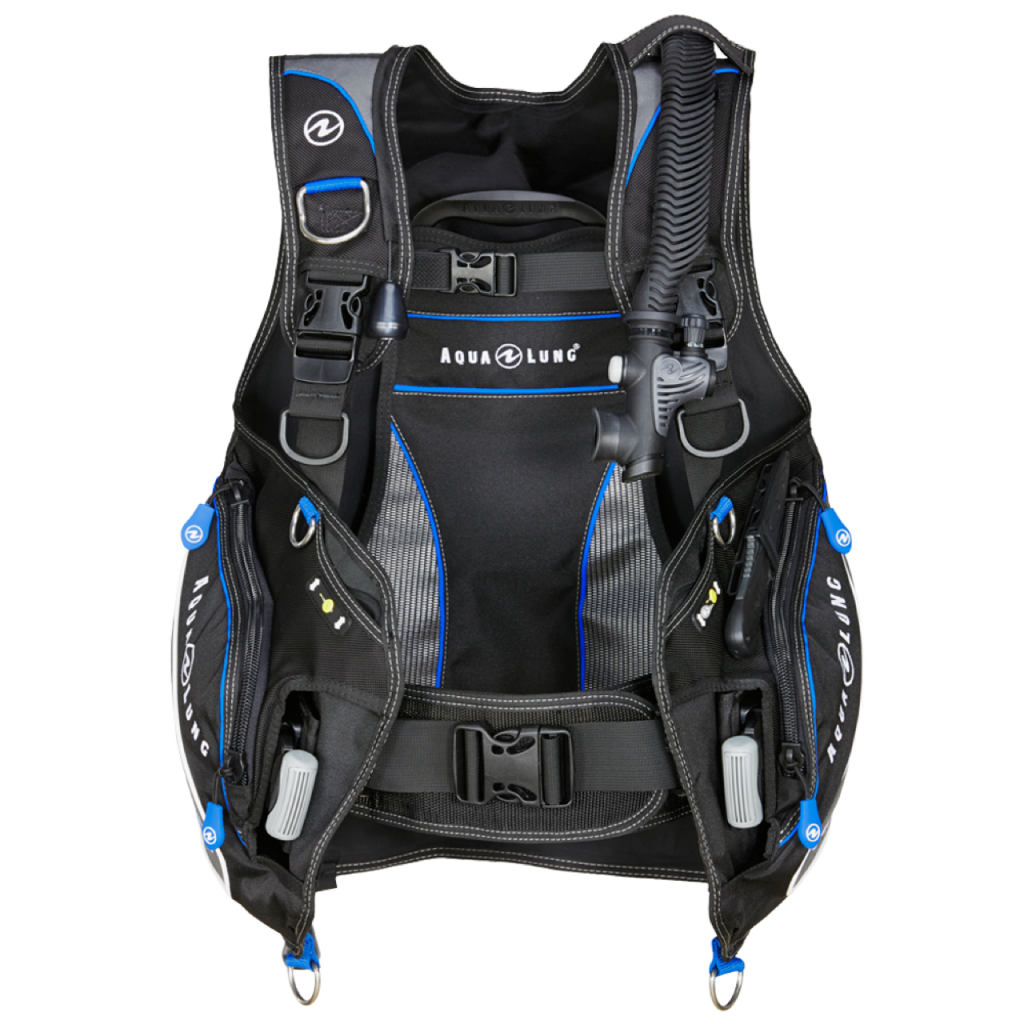
We have this combo available at a very good price, with your choice of instrumentation – SPG only, SPG+depth gauge or air-integrated computer. And as always, we have further discounts for our diving alumni. Please contact us for more information and pricing.

Best time for scuba diving in the Andamans
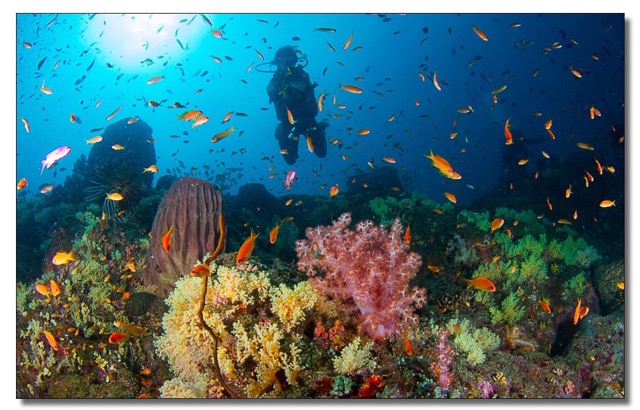
One of the downsides of having been diving for a while is that sometimes, it is easy to take the ocean’s wonders for granted – yes, the diving is still enjoyable but that sense of wide-eyed wonder is lost. The more you dive, the more cool things you see, the less you tend to be excited by the common, everyday stuff – which, if you take a step back and think about it, is pretty damn amazing. On any given scuba dive here in the Andamans, you can see well over a hundred species of marine life. Translate that to seeing 100 different animals in a national park, or 100 different birds in a morning walk.
The same thing happens with the Andamans. After going out for an evening walk with the dogs daily for nearly 10 years, it is easy to take the long stretch of quiet, untouched beach, the clear azure waters and all the interesting marine life in the low tide rock pools for granted. It’s human nature, after all.
Still, sometimes, it is nice to “see” things from fresh eyes. Rajdeep Bhattacharyya came to do his open water course with us, and has written a beautifully evocative post on his first experience at diving. It puts a smile on my face, and it reminds me of my own first dive (in a pool – where the feeling of weightlessness had me hooked to the sport instantly) and the first dive where I saw fish (dive #30, in Florida). So, with the author’s permission, here is a link: https://www.wingd.ca/swimming-fish-andaman/

Scuba Diving Courses Andaman: Learn Scuba Diving
For those interested in learning to dive, we offer the Open Water Course.
Contrary to popular belief, you don’t have to be an expert swimmer, or a daredevil adventurer in order to dive. Recreational diving is one of the safest sports around, and is suitable for everyone from the age of 10 to 65-plus. All you need is basic swimming capabilities, moderate fitness levels (ability to walk a kilometer or two without fatigue) and good health.
The Open Water course consists of 3 sections:
– Academic development: Here, you learn the theory of diving. This is covered in a mix of video, self-study and instructor briefings
– Confined water training: here, you master the essential skills of scuba, starting from the simple (breathing underwater) and working your way up to complex (removing/replacing your equipment underwater)
– Open water dives: now you get a chance to apply everything that you have learned by actually diving. We do 4 dives in the open water, where you repeat some of the skills that you learned earlier, and where you also get a chance to dive, enjoy yourself and soak in the wonders of the underwater world.
At the successful completion of this course, you receive a certification card from PADI or SSI, two of the largest diver training agencies in the world.
A quick word on these agencies: either of these cards will let you dive anywhere in the world – both are universally accepted (contrary to a popular misconception that one works better than the other). They are also interchangeable (you can start with one and switch to another, and each agency recognises the other’s cards). Regardless of which option you choose, you get a high-quality course. There are some minor differences in curriculum (more so at higher training levels), add-ons and pricing, and these, rather than brand, should form the basis of your decision. Our instructors will be happy to work with you in selecting the course that is just right for you – contact us for more info.
Typically, the Open Water course lasts 4 full days. However, we recognize that different people learn at different speeds – besides, you are on vacation and may want to spread out your training. So, the time to certification can be more or less. Two things are for sure: we will not rush you, and we will not compromise on your training.
The DIVEIndia approach: As with our diving, we believe in small groups and personalized attention for training. With our large staff of instructors, we are able to keep our classes small – usually 4:1 or better student:professional ratio – ensuring that you get all the personal attention that you need. Furthermore, as with all our courses, we go WELL beyond the bare minimum in terms of how skills are integrated, in terms of amount of in-water time you will get and also the degree of comfort and mastery that we impart before certifying someone.
Please keep in mind – just as all coaches, teachers and colleges are not the same, neither are all diving programs the same. We conduct what we consider to be one of the best Open Water training programs you will find in Asia (and even elsewhere): we have one of the most experienced teams of instructors in the region, we go well above the bare minimum in terms of standards and our goal is to actually make you a qualified diver, not just check off a set of skills and let you go. Think of the difference between learning a subject and learning to pass an exam – that sums up the DIVEIndia difference.
If you have any health-related concerns about learning to dive, please download the Medical Statement form which goes over a medical checklist. If you answer “yes” to any of the questions there, please get medical clearance from your doctor prior to reaching Havelock. You will need one separate clearance for every question to which you answer “yes.”
We highly recommend you club the Open Water Course with the Advanced Open Water Course.
The PADI Advanced Open Water course / SSI Advanced Adventurer (same rose, different names) consists of 5 dives: two are mandatory (Deep Dive and Underwater Navigation – Night is highly recommended), and for the remainder, you can choose from 15 options, including Night, Computer, Naturalist, Buoyancy, Wreck, Boat, Underwater Photography and lots more.
This is a practical course (emphasis on in-water training) and is meant to give you experience in diving under different conditions, as well as provide you with a deeper understanding of dive theory, planning and techniques.
And the reason we suggest clubbing the two courses is because it has the following benefits:
– you learn more and become a significantly better diver when you do both the OW and the Advanced
– you retain your skills longer, as you are better able to internalize the diving skills
– you are able to dive to 30m and thereby visit some of the best sites of the Andamans
– our Open + Advanced combo works out to be staggeringly good value
You do not need to commit to this in advance, but if possible, try to keep 2-3 days extra on hand after the course for this. Virtually every one who has done the combo has loved it.
Anyone who has done an Open Water or Advanced course with me knows that I feel that a dive computer is the single most important piece of equipment a diver should own. With a dive computer on your person, you have full control over your dive and are completely self-reliant – which is exactly what you, as a certified diver, should strive to be. A divemaster or more experienced buddy is good to have as an added layer of safety, but your safety is your responsibility and no one else’s.
Yes, it costs a little bit of money – but really, if you factor in the years of use you can get out of it, the annual cost is not that high. And having all the information not only improves your safety, but your confidence as well – and that means you are more likely to dive.
At this point, I can hear someone going “yes, but i can do this with a dive table as well”. Yes, you can, in theory. I did a dive yesterday – max depth 30m, total dive time 58min and at no point did we come anywhere close to our no decompression limits. If you were on tables, you would be out of the water in 24-25 min. Do you really want to pay thousands of dollars on vacation and then give up on >50% of your dive time? Let’s get real. Dive tables are obsolete for recreational divers and for good reason.
But I digress. Getting back to dive computers: until now, it really wasn’t cost effective to buy scuba gear, including computers, in India. However, times are changing. As those of you who are members of our Facebook group know, the scuba market in India has finally evolved to the point where manufacturers are taking it seriously, and now it is becoming increasingly cost effective for people to buy gear here.
So that led to me scouring the various price lists to see if there was a dive computer that could be a sensible alternative to the Suunto Zoop, one of the heavyweights in entry-level dive computer category – and this search led me to the Aqualung i300.
Before we start, a word on ‘entry level’ – that is not the same as ‘cheapest’. The idea is to find a computer which has sensible set of features ie, one which includes everything that is essential, and where you are neither paying extra for a bunch of optional bells-and-whistles, nor saving money by giving up on things that are important (be it features or usability).
The Aqualung i300 is an over-sized dive computer which has 4 modes: Air, Nitrox, Free and Gauge. The first 2 are for diving, the 3rd for skindiving/apnea and the last for use as a bottom timer when doing technical diving.
The first thing that jumped out at me was that the i300 has user-replaceable batteries. This is a heaven-sent. My personal computer, a Suunto D9TX, requires me to send it to Thailand every time the battery runs out – which means a couple of months without it. User-replaceable batteries are a ‘must have’, in my opinion.
The i300 also comes with a bunch of useful features: backlighting (for viewing in the dark), auto-detection of altitude and fresh water/sea water, the usual depth and time alarms & 2 unique alarms: a ‘Dive Time Remaining’ alarm (which can be set to beep to however many minutes before you hit your no-deco limit) and a nitrogen loading alarm (which can be set to beep when you hit 20%, 40%, 60% or 80% of your max nitrogen loading).
It gets credit for having a sensible Dive Plan mode – on many computers, including several Suunto models, accessing the Plan mode during a surface interval would only provide the bottom time based on the current surface interval. So if you were 30′ into the SI and wanted to get in the water after another 45′, there was no way to figure out how much bottom time you would get then – the Plan mode would only show you how much bottom time you had at that time. Thankfully, the i300 lets you add more surface time to the planning mode, which makes it actually useful for figuring out how long you have to wait or what your depth/time limits would be when you actually got into the water.
Two other neat features – it has a ‘Deep Stop’ option you can enable, if you want, and it also lets you specify the depth and duration of your safety stop.
In addition to the above, the Aqualung i300 also has all the other usual features – dive log mode, total number of dives logged, a conservative factor setting (which lets you make the computer more conservative), metric/imperial adjustments and the ability to sync with a computer with an optional cable (this lets you download your dives for review on a computer or online dive log software, and also lets you upgrade the firmware of the device if need be) and auto-on – although for some inexplicable reason, you actually have the ability to turn off the ‘auto-on’ function, if you so desire.
Lastly, the i300’s Free Diving mode is quite robust: not only does it includes things like a Countdown Timer (before you start your immersion), but the computer actually tracks your activities in Free Diving mode. So that means you can switch from Free Diving mode to one of the Diving modes (Air or Nitrox) at any time – many other computers, including several Suunto models, require a 24-48 hour waiting time before letting you switch modes.
All of this is well and good, but ultimately, the main purpose of a dive computer is to help you plan and execute your dives. How good is the i300 at this?
Let me take a step back and sign a paean to Suunto dive computers. They are one of the heavy-weights of the dive industry, and with good reason – sophisticated computer models, workhorse reliability and smart interfaces. However, the big knock against them has always been how overly conservative they are – they use a very advanced model called RGBM, which tries to predict and minimize silent bubble buildup in the body, but the downside to this is that your dive time is greatly reduced, especially on repetitive dives.
The i300 is made by Pelagic Systems – who also make dive computers for Oceanic, Mares and others, and who are one of the leaders in developing decompression algorithms. The i300 uses their PZ+ algorithm, which is a moderately conservative algorithm, slotting in between the liberal DSAT model (also created by Pelagic) and Suunto’s conservative RGBM model.
So in theory, this should give you more bottom time, especially on repetitive dives.
But hold on – isn’t it better to have a more conservative computer? I sort of agree with that – their extra conservative model is the reason we use Suuntos in our dive center, after all.
However, the decision-making for a dive center is going to be different from the decision-making for an individual: we have to take into account divers of all body types, fitness level, age groups, health levels and abilities. You only have to take into account yourself.
And the inescapable fact is that millions of people have been diving safely for years using variations of the Buhlmann model (which is the compartment-based model that you learn in Open Water and even Divemaster), of which the PZ+ is a derivative. So at what point is a computer conservative enough?
Suunto themselves recognizes it to some degree – on their higher end computers, such as the D9, they offered a setting which would let you make the computer less conservative.
Generally, my belief is this – unless you have a condition which requires you to be more conservative when it comes to DCS (age, fitness, overweight), the PZ+ algorithm is going to be more than adequate at keeping you safe – just be careful about watching your ascent rate, give yourself atleast an hour between dives and follow all the concepts of safe diving that you learn in Open Water, and you are good to go.
Over the past few days, I have taken the computer for a bunch of dives, along with my Suunto D9TX and a Suunto Zoop from the dive shop. To test how the computers responded to various diving situations and emergencies, not only did I do a day of regular diving, but I also took all 3 computers into decompression, and did a day of reverse profiles (a shallower dive first, a deeper dive second).
The computer behaved pretty much as i expected: on the first dive, I got a bottom time that was somewhere in between my D9TX (which has the reduced RGBM algorithm) and the Zoop (which has the full RGBM algorithm). The difference between all 3 computers was fairly small. On the second dive however, the i300 gave me a little bit more bottom time than the D9TX, and both gave me significantly more time than the Zoop – this is pretty much what I expected, given the algorithms.
The backlighting worked well, the tactile buttons were a pleasure to use, and all the automatic features of the computer worked precisely as they were supposed to. And the readout is very clear and easy to read, with all the essential information available at a single glance.
On the reverse profile day, the same held – all 3 computers gave readouts that were ‘sensible’, with similar bottom times as earlier.
On the decompression dive, there was a significant variation, however. I went down to past 40m and hung around till all 3 computers went into deco (no significant differences in bottom time here) and started to ascend once both computers were showing me 5′ of ascend time. As i ascended to a shallower depth and the controlling compartment changed, the Sunntos gave me credit for off-gassing on the faster compartment and the deco obligation cleared by the time i was at 15m. However, the i300 obstinately kept that deco clock ticking till I ascended to shallower than 10m.
This is a key difference – the Suuntos are designed for decompression diving (provided you are trained and qualified to know how to use them for this), whereas the i300 is strictly for recreational, no-deco dives (and it doesnt pay any attention to that ‘recreational deco’ nonsense) – So someone who is a technical diver or planning to become one may prefer a different computer. However, for the vast majority of recreational divers, this isn’t such an issue. You shouldn’t be going into deco anyway.
2 weeks ago, if you had asked me to recommend an entry-level computer, I would have blindly said Suunto Zoop/Vyper – why? Because i am a long-time Suunto user – and Suunto is also the brand that we use in the dive shop, with excellent results.
However, while the Zoop still makes sense for the dive center, I think that for an individual diver, the slightly less conservative algorithm of the i300 makes it a better buy, especially given that prices are comparable.
There are a couple of cheaper options out there, such as the various 1-button dive computers like the Mares Puck. However, going back to what i wrote earlier about the difference between ‘best entry level’ and ‘cheapest’ – single button interfaces are a pain in the rear. Given that the monetary savings would have been very modest, I ruled those out.
There are also more expensive options out there – what a greater price gets you is a smaller form factor (so you can wear it like a wrist watch – which is actually a really good thing: it goes with you whereever you go, so you are sorted if you make a last-minute decision to go diving somewhere), air integration via optional tank transmitter (so you can see how much air you have left, both in bars and time, based on your breathing rate), an in-built digital compass (that’s nice to have for serious divers and pros) and, at the highest end of the scale, the ability to switch gases between various nitrox and helium blends and rebreather modes (useful for technical divers).
All those features are nice to have, and if budget allows, by all means go for it. A Suunto D6 or equivalent is a great buy in that price range. But if you are a casual recreational diver who is not looking to spend a huge amount of money on unnecessary gear, the Aqualung i300 gets my vote as the first piece of scuba gear you should own.

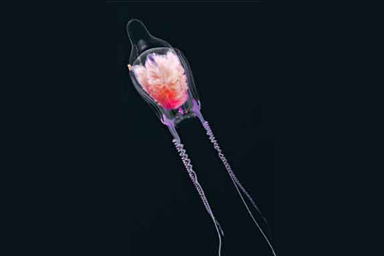
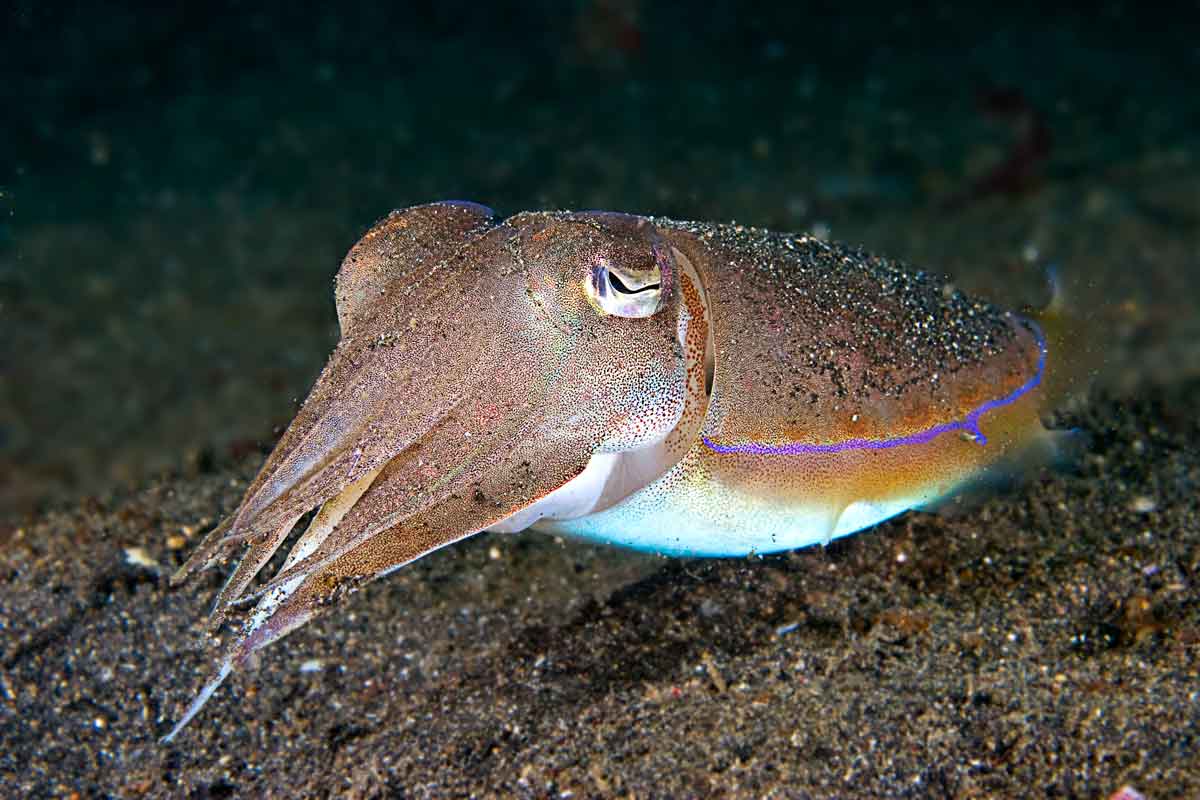

Here is a new video on the Inchkett
Port Blair, March 28: Andaman’s oldest scuba diving center ‘DIVEIndia’ has been awarded India’s Favourite Adventure Tour Operator, based on a poll of over 7500 readers of Outlook Traveller magazine and website. Vandit Kalia, Managing Director of the company, was presented with a plaque and a certificate by Shri Parvez Diwan, Secretary of Tourism, Ministry of Tourism, Govt of India, at a function held in New Delhi.
The poll, validated by IPSOS, is an authoritative benchmark of consumer preferences in the areas of travel and tourism, including hotels, airlines and holiday destination and is part of an annual survey conducted by Outlook Traveler Magazine.
Commenting on the award, Kalia said, “This award goes to each and every person of the team, all of whom have quit corporate careers to pursue their passions – we strive to offer the highest quality scuba diving services and at the same time retain a personal touch, and being recognized by our guests for this is one of the most rewarding things for all of us, especially as it comes during our 10th year anniversary”.
DIVEIndia has been operating in the Andamans since 2003 and has established itself as one of the leading dive training agencies in India, offering training programs all the way from beginner to instructor. It celebrated its 10 anniversary in December 2013, and has plans to expand operations to cover all major Indian cities.
So far, muck diving has been synonymous with Lembeh in Sulawesi. Well, the Andamans is a geographical extension of the same region, and we – especially Vikas and Sayeed – have been exploring the macro realm quite intently, looking to expand the scope of what is available here.
During the season, we found a few “firsts” for the Andamans – electric clam, frogfish and devil stinger. And now that the off-season is slowly coming upon us, we have been doing some exploring… and this past week, we found the archetypical muck diving site: black sand, no rocks or coral, just lots of sea urchins and massive feather stars. And while here, 2 exciting new discoveries: ambonscorpionfish (!!!) and robust ghost pipefish!
With an average depth of 18m, and sloping down to 60m plus on one side, this site is accessible to all diver levels and we are also planning to do blue-water dives off from here, hoping to find hammerheads (fingers crossed). Will keep the world posted on what happens!
The site name is V16 for now, and it will be on our schedule of regular dive sites from next season.
So Vikas and I spent 3 days, sitting at the Port Blair port, waiting to get everything sorted so that we could lower our boat into the water (a process which, if one removes the waiting time, took an actual 20 minutes of effort). Yesterday morning, we woke up at 4:00am and headed over to the pier, departing Port Blair by 5, just at the crack of dawn.
Flat calm seas, beautiful lighting, a few sleepy gulls and Mako, purring along with her engines at mid-revs. A couple of bursts of speed got the speed up to well over 40knots and put big smiles on our face.
Today, Gregorio and his friends from Spain, who’ve been diving with us for the past 8-9 days, became the first divers to go on a dive trip on Mako – a sunrise dive at Johnny’s Gorge. Departing at 5am, we were there by 5:20am and had an amazing dive. A couple of the divers claimed this was their best dive ever (and these are people who have dived Galapagos and Sipadan, mind you), for the sheer wealth of fish life on the site.
So, this is what the future holds for DiveIndia this season — dawn dives, expedition trips to Barren Island, Invisible Banks, Campbell Shoal; extended range of day trip from Havelock to include North Button, Port Blair and Neil Island (including the drop-offs around Neil, where supposedly big sharks hang). These will be exclusive trips – 4-6 divers, 1 guide and 2 or 3 tanks, depending on where we go.
At the risk of sounding like we are tooting our own horn (we are, I admit, but I think we’ve earned it ), we can safely say this represents another evolution in what diving in the Andamans has to offer. The first was the new sites discovered by Johnny, Dixon and Jackson; the next was the North Safaris and now this.
As of now, we will be running day trips to virtually all sites visited by liveaboards, and a lot of other sites that they don’t know about (there’s that local expertise coming into play again). And you get to experience the magic of the Andamans as well…
Yep, it’s been a while since our last blog, but I think this one was worth it. We’ll be posting videos and clips online very soon as well.
Safe diving,
Vinnie
Every instructor is familiar with this scenario: take 10 students and teach them the same Open Water course, and 6-7 will be competent, 2-3 will be excellent and 1-2 will be at the cusp of acceptability – they may meet all the skill requirements, but the instructor knows in his/her heart that this student is not yet ready to dive independently.
There could be many reasons for this, but a common (and often-ignored) cause, and the subject of this article, is kinesthetic awareness (or K-Factor, to coin a sexy phrase) or lack thereof.
A student’s first immersion in water leads to a lack of physical coordination – gravity, balance and force don’t work the way they are used to. The weight shift that they use on land for balance correction only causes them to topple over. Using their arms for balance doesn’t help. Their body simply doesn’t behave the way they expect.
Most students start adapting very soon – I typically see a big improvement about half-way through the confined water session, and then on each additional dive. In fact, this continues all the way through to Advanced Open Water (which leads to my article on when to do the Advanced Course, but that is a separate topic). Slowly, they realize that doing A and X leads to C and Z underwater, and not B & Y, and their brain starts to build the neuro-muscular patterns needed to replicate this. This process is very similar to the way you learn to play a racket stroke, golf swing, basketball shot, etc. etc. In other words, the student starts to gain a new set of kinesthetic awareness for the underwater world. When this happens, it is as if a switch has come on – they slow down and stop fighting the water, their movements become deliberate, their buoyancy improves and they no longer resemble puppies on speed underwater.
But what about the small percentage of students who simply continue to fight it and simply don’t gain that K-Factor?
Let me go off on a seeming tangent now and talk about a dive industry secret that you don’t know, or whose implications you have not considered. The secret is this: the role of most dive agencies is not to product highly-qualified divers, but to make diving accessible to as many people as possible while maintaining acceptable levels of safety.
And for the record, while this approach is far from perfect, I am not saying it is inherently a bad thing. If you want to ski, do you need to be an expert skier who can handle black diamonds before being let out on the slope? Of course not. You merely need to learn the basics and then you go forth and ski, and continue to develop skills (this aspect – of continued skill development – is often ignored by the doom’n’gloom brigade who rend their garments and beat their chests at the state of diving today).
In a similar vein, diving courses tend to focus on teaching the basic, specific skills needed to dive safely – how to clear your mask, how to share air, how to achieve neutral buoyancy, etc. After that, you go forth and continue to develop those skills and have a bunch of fun in the process.
Using Bloom’s taxonomy, the focus in entry-level training courses is on getting up to the Comprehension level in the Cognitive domain, and Mechanism stage in the Psychomotor domain. Sure, a conscientious instructor might go up one or two stages higher in each of these domains, and also perhaps up to the Valuing stage in the Affective domain, but strictly speaking, it is possible for a student to get certified if they merely achieve the above-mentioned two stages.
Leaving jargon aside, what does this mean in reality? It means that if the student is able to understand dive theory to the point of being able to pass the exam (Comprehension) and able to satisfactorily perform a set of complex tasks (Mechanism), then he is ready to be certified – which, as we all know, is not the same as being qualified.
Oh come on, Vinnie, you are such a pessimistic cynic, you say. My students do a lot better than that, and are able to apply the information I have taught them to new situations [Application and Adaptation], you claim.
Sure. A lot of instructors do ensure that their students are able to integrate what they’ve learned, and actually master the motor skills they were taught, to the point that they can apply them with some situation-specific modifications as needed. However, my point is that due to the focus of the dive industry in making sure diving is accessible to as many people as possible, teaching standards of most agencies are focused on achieving basic competency and safety, that’s all.
So now let’s go back to our student diver who has successfully completed all the skills but hasn’t stopped fighting the water yet.
Any instructor who cares about producing qualified divers (and sadly, this breed is not as common as you would think, given that scuba is a passion-driven sport) will not just hand out a C-card to this student. However, this where the support system provided by the agencies tends to fall apart.
While experienced instructors usually develop, through trial and error, their own set of exercises to help such a student achieve aqua-zen, newer instructors are often left to their own devices in such cases. Some of them give up on the student. Others just say eff it and certify the student, to ensure that they get their salary commission or meet their targets. Yet others waste time repeating buoyancy drills or mask clearing drills or whatever, sometimes frustrating the student to the point where they are put off diving for good.
Not surprisingly, as there is nothing in any Open Water curriculum I have seen that even discusses this problem, let alone give tips on how to solve it.
As such, I’d like to address this gap by suggesting a few tips of my own for teaching kinesthetic awareness to students – and do note, these tips are by no means exhaustive, there is some overlap between the concepts in them, and there are plenty of other ways to teach this as well. These are simply tricks that have worked for me and instructors I have taught/worked with.
1/ Start by making sure kinesthetic awareness is the issue, not something else
Sounds obvious, doesn’t it? But accurate diagnosis of the problem is often harder than it seems. As instructors, we all know what the critical attributes for a particular skill are, and how to pinpoint skill mistakes by checking the critical attributes. But when a student is fighting the water, it is harder to figure out if it is a matter of nervousness/fear of the water, lack of the K-factor, or a specific lack of knowledge on how to perform a specific skill. To complicate things, nervousness can be increased by the lack of K-Factor, and vice versa. While there are some things that can indicate a likely reason, they are not reliable and my goal with this article is not to handhold anyone (or provide guidelines which can be mis-interpreted as rules), so I am not going to get into specifics – suffice to say, simply by knowing the possibilities, you can start the process of eliminating them by observing and chatting with the student.
2/ Allow the student to struggle a little
Yes, that is correct. A lot of instructors will pile on with a bunch of instructions, signals, exercises, etc. right at the beginning. I suggest the opposite approach – let the student struggle a little with flappy hands, moving around a lot, etc. and then start to work on specific exercises to correct them. Now, the trick is to only let them struggle only a little – too much, and they start to build in bad habits or get discouraged. And needless to say, the struggle should be purely with motor skills, not mental or physical stress. The benefit of this is that the student has a first-hand experience to draw upon when you explain how to correct the problem.
For example, when I teach confined water, I initially do a short underwater swimming without any briefing on buoyancy, use of the BCD or lungs. We just go for a swim. Then I give each student one specific thing to try on the next swim. And so on.
3/ One thing at a time
It is very easy to overload someone with a low K-factor by giving them a complicated briefing with multiple sub-skills. For that reason, it is best to work in small steps and give them one thing to focus on. Give them time to experiment and truly absorb what happens when they try that one thing you have told them to work on. Once they get the hang of this, then go to the next one.
Hovering and neutral buoyancy is a skill where people with poor K-factor usually struggle: so usually I start by having them focus on one thing only – using their lungs to inhale/exhale and see what happens. They are encouraged to experiment with different breathing patterns in an effort to imprint upon their brain the relationship between breathing and buoyancy. At this point, everything else is secondary. Once they get this, then we go further.
Usually, each step in this process is related to the errors that have led to the struggling.
4/ Work on breathing and balance
The best way to learn proprioception (another fancy word for K-factor) this is to simply spend time in the water and feeling how your body reacts. I usually tell the students to let their body
do whatever
it wants, and just focus on relaxing and breathing. As you can see, this is an application of point #3 above – i.e., one step at a time.
5/ Complex to simple works well sometimes
Usually, the best way to teach things is to keep it simply and slowly add complexity. In principle, this is correct. However, take a particular Task X, which consists of sub-steps (or critical attributes, if you will) of A, B, C and D. Each of these is a simple task, which, when done in succession, accomplished the complex Task X.
By breaking X up into A, B, C and D, you are effectively simplifying the task. At that point, you can add complexity to when teaching sub-step A. And separately to B, C and D as well. Then, when you put them all together without the added complexity, each sub-step becomes easier to perform and the overall Task X ends up being overlearned.
Case in point: for the first few sessions, I over-weight my students and have them learn to achieve and maintain neutral buoyancy while overweighted in shallow water. Then, once this is mastered, the extra weights come off – so the added complexity of swimming while neutrally buoyancy is off-set by the simplication caused by proper weighting and greater depths.
Obviously, this has to be used selectively – and generally, it is effective only if it meshes with the overall geshtalt of your teaching style and progression. So dont go rushing in and making everything complicated right from the get-go. But if done right, especially for certain specific skills and within the proper framework of your overall teaching progression, it is a very powerful technique.
6/ Reduce pressure – allow student to practice on their own
There is a difference between a student not understanding what he needs to do, and a student not being able to perform the skill. With K-Factor issues, lack of understanding is not the problem – it is the ability to perform that is. In such cases, it helps to give the student time to work at their own pace, without the added pressure of someone watching and evaluating them.
I am often surprised by how much of a difference 5-10 minutes of solo practice can accomplish, yet many instructors – fed by an agency-fuelled diet of always needing to supervise and control – find it hard to leave the student alone. Find a safe place in confined water for the student to practice, give them 1-3 simple and specific things to work on and leave them alone for a while: you might be surprised by the improvements in a short term.
7/ Give them time
Sadly, there is no shortcut here. You cannot teach K-Factor, the students have to acquire it themselves. And nothing beats time. Obviously, there are limitations on time imposed by external factors, and there, each dive center has its own policy. I would encourage instructors to ensure an environment which minimizes time-related stress for the student – and by time-related stress, I include cost-related stress as well: i.e., “If I don’t learn it now, I will lose $X or have to pay $Y for more training”.
I realize not every dive center can operate this way, but our approach is we charge a student a certain fee to teach them to dive – and that takes whatever time it takes. This isn’t as extreme as it sounds: with most students, even those with fairly poor K-Factors, it only requires a few additional sessions, including perhaps some solo practice time, for them to gain competency. And realistically, a student who has such poor K-Factor that he need substantially more time is probably not ready to be certified at this point of time anyway.
8/ Non-scuba skills work
Snorkeling, skin-diving and even swimming sessions are a good way to build K-Factor. And as an added bonus, a lot of this practice can be done outside training time.
The Total Immersion swimming books and videos have a couple of good drills on teaching balance – these are primarily geared towards swimmers, but I have found that the same balance drills are actually very helpful for students with acute K-Factor issues. Because practising these drills do not require scuba gear, the student can work on their water balance in a pool or beach-side, between training sessions or even after certification.
9/ Teach relaxation
Try this – unclench your stomach and your glute muscles. When you do, your whole body relaxes. In martial arts, when doing chi-flow exercises, relaxing/tightening the core is one of the basic exercises for developing chi flow. On a more prosaic level, it is impossible to be stressed, struggle and to retain air in your lungs when your stomach and butt muscles are relaxed. When a student focuses on this aspect, he is too busy to struggle in the water – in the meantime, his subconscious brain is busy learning proprioception and re-wiring his neural system accordingly.
10/ Patience and communication
As an instructor, it can sometimes get frustrating. You pride yourself on the thoroughness and efficiency of your teaching, and of how good your typical student looks in the water when done. And now you have someone who simply refuses to absorb your training. Even the most patient of instructors will have a few “COME ON ALREADY” moments. I have to admit, I have.
However, in such cases, it helps to realize that if you are frustrated, the student is doubly so. He is seeing you looking graceful in the water (as an instructor, you DO look graceful in the water, right?), he is seeing the other students doing the same thing a lot more easily – and you can be sure, he is frustrated by his own struggles.
This can make him stressed, which leads to clenched stomach/core and greater air retention in the lungs, which in turn leads to greater struggles. This can also lead to finding excuses – this isn’t working, I don’t have enough weight, etc. etc.
As an instructor, you need to find the right balance between being encouraging and positive, and at the same time, not wasting too much time entertaining false excuses.How you deal with it varies depending on you, the student, the dynamic between the two of you and the situation, and can range from gentle encouragement to firm instructions and even tough love. Regardless of how you choose to handle it, use empathy (not sympathy, mind you – the two are different) to understand what the student is feeling and figure out the best way to get them to improve.
Teaching diving is, in many ways, an exercise in managing liability. So instructors, with the best of intentions, tend to be excessively protective of their hatchling divers while teaching the course. And then the certification happens, the hatchlings become certified divers and get passed on to Divemasters – who are focused on mainly showing them cool stuff and preventing accidents.
This leads to a state where divers are often kept in an overly protective bubble when they are doing the course, and then left to fend for themselves, without much guidance or mentoring, once they have completed the course. As such, further development often follows the “learn from bad experiences” model.
Here, I present 10 skills/areas which all divers should strive to develop and maintain. These will help you become more confident, better and safer divers.
Visit any popular scuba forum, and one common question that is encountered is – which agency is better.
Well, there is an easy answer to that – none.
The standards for basic Open Water training are set by an agency called the Recreational Scuba Training Council. All the major agencies are members of this council, so the essential standards are more or less the same. There are some minor differences in how agencies approach teaching, their standards and so on. However, these are akin to different routes for climbing a mountain – you get there in all cases.
The popularity of one agency over another typically has more to do with business reasons (cost of becoming an instructor, marketing benefits, cost of certifications, and so on), none of which really affect you as a student diver.
Anorther concern some students have is – “I have not heard of PADI/SSI/NAUI/NOB/SDI, so will my card be accepted worldwide?” Short answer is – yes, it will. Just because you have not heard of the smaller agencies is not really a big deal. After all, why would you, a non-diver, have heard of all the different agencies out there? You can be assured that the dive centres you visit, however, HAVE heard of these agencies and recognize them. All of them.PADI, SSI, NAUI, CMAS, SDI, ACUC, NOB, BSAC and more. They are all valid and recognized agencies.
Look at it another way – as a dive centre, we are in the business of taking qualified divers out for dives. Why would we turn away someone from a recognized agency? Now if someone shows up with Bubbajohn’s Scuba Card, that’s one thing. But turning away a diver from another agency would only happen for two reasons: one is ignorance, and the other is some kind of personal bias or ulterior motive (perhaps selling you another course). Either is a reason to go dive with another operator.
So instead of agencies, let me give you 2 bigger variables that you should consider, when it comes to the quality of your diver training:
One is the instructor. A good, conscientous instructor will make sure you are truly comfortable at each stage of the learning process before moving on to the next. Diligently following the standards of any agency generally ensures a thorough course. On the other hand, an instructor that cuts corners will teach a shoddy course, regardless of which agency he is affiliated with.
Another is you, the diver. No matter how well a course is taught, if you don’t get in the water again for another 6 months or a year, you can be assured that your skills will atrophy to some degree or the other. Diving, like any other sport, relies on repetition and practice for mastery. The Open Water course gets you to the point where you have learned the basic skills and are ready to continue growing them through independent diving.
To use a golfing analogy, the Open Water course would be the bit where you take your newly purchased clubs and get lessons on hitting the ball till you are able to hit the ball decently without digging up huge divots every time. However, to become a good player, you still have to go out to the course and play regularly.
Some people have a natural ability and leave the Open Water course as fairly polished divers. Others leave a little “rougher around the edges” and need a little more practice. That is fine. Diving is not a competitive sport, and as long as you are able to maintain your buoyancy and are calm in the water, it is ok if you flap your hands a little bit to steady yourself as you swim. You only get better with practice, after all.
So, let’s now look at a list of factors that you should or should not consider when doing an open water course:
What you need to look into is how much time is spent in the water. Some places specialize in a course where confined water training is essentially rattling off all the skills once and that’s it – no swimming around and getting a hang of this whole underwater thing, no repeating various skills, etc. This then gets repeated in the Open Water portion of the course – divers go down, sit and do the skills, swim around for 5 minutes and up. Such a course has taught you the various skills of diving, but not diving. So make sure you get a course whichemphasises plenty of time in actual diving (which is where you will learn the meat & potatoes of diving).
So look into what your options are in case you have problems completing the course and need more time. The worst case would be a “sorry, better luck next time.” The better dive centres will offer you a chance to continue your training – either on a one-on-one basis, usually at an additional charge (which can be modest to extremely expensive) or by giving you a chance to jump into the next class. What you are looking for is a course where the overall setup is one that does not impose an external time/monetary pressure on you to try to complete the course within a strict timetable.
Hopefully, this article has provided you with a good basis with which to decide on where to do an Open Water course.
We encourage you to ask around and compare our courses to those of others, and make an informed decision.
Happy diving!
Click one of our contacts below to chat on WhatsApp